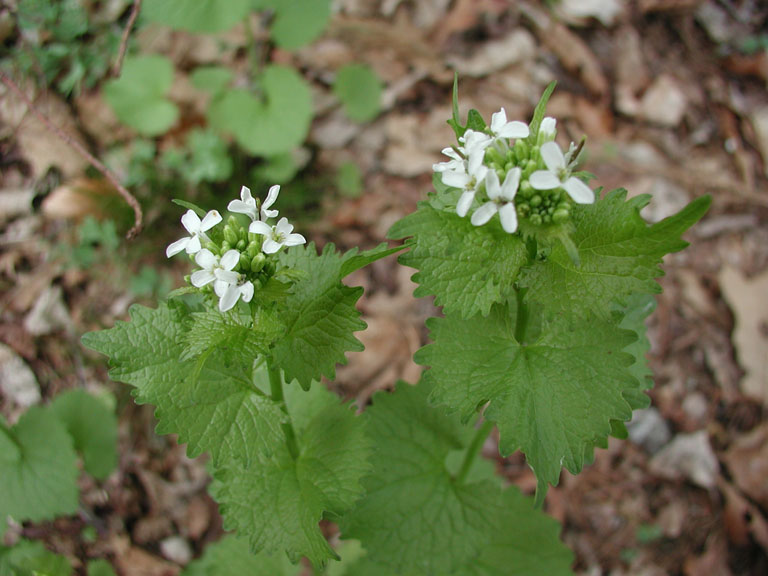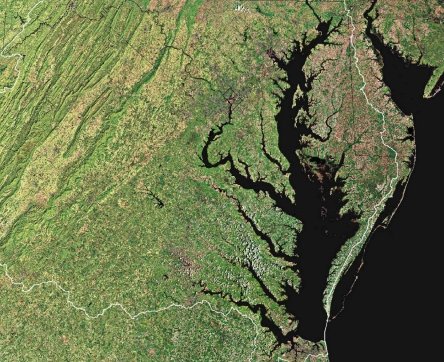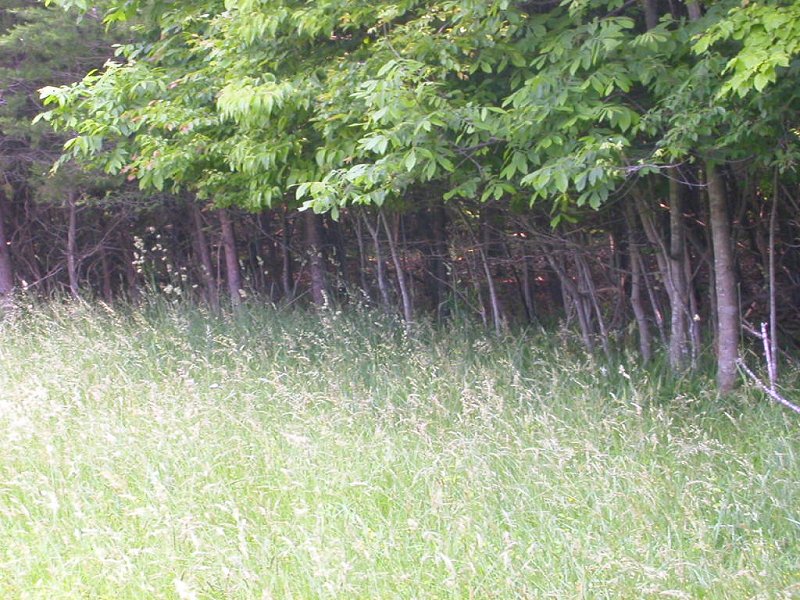
galic mustard (Alliaria petiolata), a non-native and invasive species
(now blooming throughout Northern Virginia)
Source: Leslie J. Mehrhoff, University of Connecticut, Bugwood.org

We don't know what happened in Northern Virginia 401 years ago, but we know what happened 400 years ago - Europeans rowed/sailed up the Potomac River. John Smith and his fellow explorers from Jamestown examined the shoreline of what later became Stafford, Prince William, Fairfax, and Arlington counties, plus the shoreline of the City of Alexandria and the towns of Quantico, Dumfries, and Occoquan. The Europeans may have penetrated as much as 6 miles inland in some places on that journey; the limits of personal observation are marked on Smith's map by Maltese crosses. In Northern Virginia, more likely they saw little more than the shoreline in 1608.
So today, when you hear people refer to "native plants" and "restoring" the Chesapeake Bay, recognize that their baseline is probably that moment 400 years ago when John Smith reached Northern Virginia. Conditions before Europeans arrived - the pattern of forests and fields, the abundance of different species of plants and animals in the area, the quality of the air and the water - is the "natural" state of the area. After Europeans arrived.... well, there went the neighborhood.
Of course, you don't have to buy into the idea that a fixed moment in time is the right baseline. Go back 15-25,000 years, and there were no humans in Northern Virginia. There was no Chesapeake Bay either - it emerged only in the last 3-7,000 years, as glaciers melted and sea level rose enough to drown the valleys of the Susquehanna River and (in our area) the Potomac River. Go back 300 million years, and there won't even be an Atlantic Ocean.
So what's natural?
The answer is relative, not absolute. Natural is a set of environmental conditions where the influence of humanity is not screamingly obvious. A parking lot or Colvin Run Mill is a "built environment" rather than a natural place. Great Falls appears to be a natural place, if you ignore the trails, the parking lot, the wooden structures, the stone foundations, the artificial channel where a canal was dug, and alien species such as garlic mustard and the Asiatic clam.

Other species have taken advantage of human-triggered changes in habitat. Pigeons benefit from roosting locations under modern bridges. Canada geese are fueling up on the lawns at Northern Virginia office parks during the summers, and not even bothering to migrate north to breed in Canada. (Imaging if you could interpret their honking in February: "Hey, you want to get really tired flying north again, or just build a nest on the island in the stormwater management bond next to the Chevy Chase Bank?")
Deer are... well, deer are everywhere, causing gardeners great angst. In Northern Virginia's suburbia, deer are waaaaay too common, and far more common than they were when John Smith arrived. In the last 400 years, we transformed a thick forest where deer had little to eat into a mixture of fields and forests. The grasses in the office parks, the fertilized shubs and flowers in back yards, and the twigs that grow on the edge of forests are excellent food sources for deer.
In the process of settling Northern Virginia, we eliminated the wolf that kept deer populations in check. Modern predators are primarily cars. Not surprisingly, we ended up with an overpopulation of deer, to the point where sharpshooters have been paid to remove excess deer. When you see a deer in your headlights, remember that the number of deer in Northern Virginia is about as "unnatural" as the number of cars - if your baseline for "natural" is the year 1608.
Read:

There are no places in Northern Virginia that have not been altered by human settlement, especially in the last 400 years. The Wilderness Act of 1964 calls for setting aside areas that have not been "trammeled" by humans, but there are no such areas in Northern Virginia. Even with 40 inches of rain, and the capacity of local vegetation to convert an abandoned front yard into a thick forest in less than a century, the impact of human settlement is obvious everywhere in Northern Virginia.
Sometimes the impact is in what you see, and sometimes it's evident by what's missing. The passenger pigeon has been replaced by the non-native starlings and English sparrows - plus contrails in the sky. The percentage of carbon dioxide in the air, the mercury in the water, and the glow of artificial lights at night are evident... everywhere.
See
We have grown so accustomed to some non-native species that we don't want them to disappear. The potential loss of imported-but-now-naturalized honeybees, due to a mysterious collapse of their colonies, makes the news each Spring because we depend upon those bees to pollinate fruit crops such as apple orchards. The Japanese honesuckle adds great smells to our fences in early June, and some would miss it if the plant disappeared - but it is a weed, a plant that does not "belong" here.